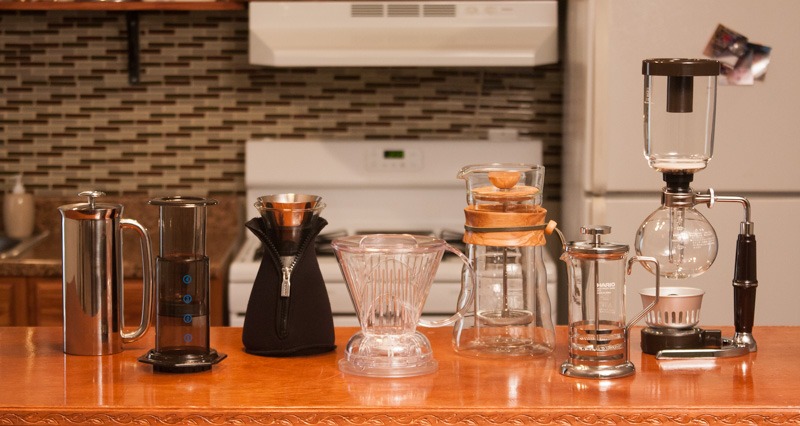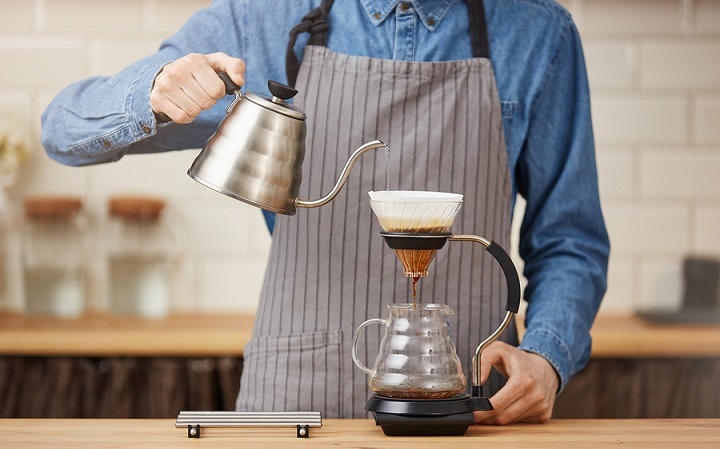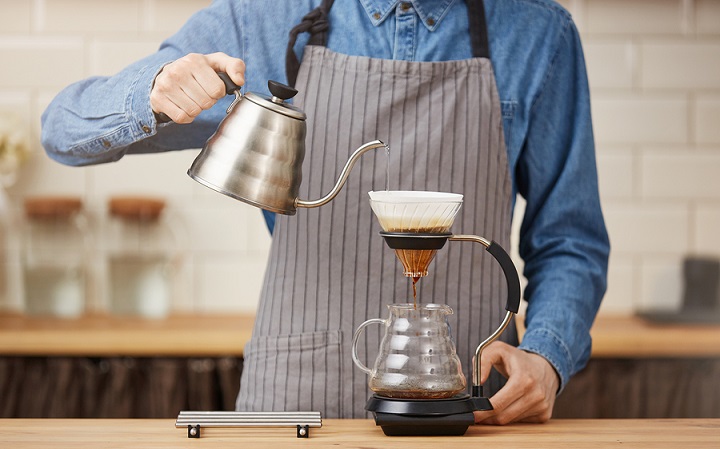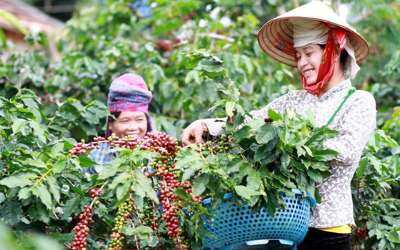Pour Over is one of the most widely used and popular methods in specialty crafting coffee. Pour over is also the method discussed in terms of techniques and tools for daily concocting.
So what is the Pour Over method, what tools do you need to prepare next to the pour pot and what parameters in Pour Over affect the taste of your coffee, let’s find out with Prince Coffee!
1. What is pour over?
Pour Over has a fairly simple definition as pouring (pour) hot water through coffee powder through a filter. The Pour Over method is also known as the filter method (Filter coffee) or the drip method (Drip Coffee). Pour Over also known as hand brewing or manual brewing.
Pour Over is a method that has been widely used in Europe since the 1900s but has become more popular and explored in the specialty coffee flow in recent years.
2. Why use the Pour Over method of preparation crafting coffee?

Several manual coffee making tools with different methods
The Pour Over brewing method allows coffee to extract the most complex coffee flavors. It is also the perfect choice for single origin coffee beans when this method helps to bring out the most prominent coffee flavor and aroma.
A good coffee filter should be clean, clear and stable. Simply because water allows the coffee to extracted, oil and flavor extracted with time and pressure. This results in the filter retaining the oil from the coffee beans.
Because this is an infushion method (Step-by-step absorption and extraction), it will be more effective in extracting coffee than French immersion method. Press. The Immersion method causes the water to become saturated, while the pour over method provides a continuous pouring of water.
However, crafting coffee using the pour over method also has certain challenges. Since it is a manual method, it highly influenced by the barista’s technique, as with all infusion methods (including espresso) there can problems with uneven extraction (Channeling).
It is difficult to replicate exactly the method every time, which is also why cafe owners prefer to use tools approved by the SCA. These machines allow automation and give more accurate results than manual watering.
3. What do you need to prepare?

Tools included when you choose the Pour – Over method. Photo: https://theprincela.com/
There are hundreds of unique dispensing tools on the market today. But to start, choose for yourself the simple equipment first and then add it later when you really need it.
Dispensing tools

Some typical vases for the Pour-Over method
The dispensing tool is simply a device that holds the coffee filter and grounds. V60, Kalita Wave or Melita are popular choices. All three types are interchangeable, but each type has different design functions for each aid flow and affects extraction. The chemex pot is a popular choice with a design feature that affects the entire cup of coffee.
The advantages of using these tools are their popularity, ease of use, and filters that fit each tool’s design. There are also instructions and tips/tricks to use the correct type when needed.
If you’re just getting started with baristas and don’t know where to start, go to specialty coffee shops and ask baristas what tools they love and why!
3.1. Filters
Filter paper or cloth? Bleached paper or not?
You might think filter paper is the least disruptive part of the brewing process, but it’s not. Specific filters designed to fit different dispensing tools allow for more efficient extraction. Chemex flasks use filter paper that is 20-30% heavier than other filters to help retain more oil during the brewing process.
Some argue that filter paper will give off an undesirable paper smell, especially if bleached. To avoid this, you must rinse the filter papers before using them. Filter cloths have around for a long time and preferred by many people because they do not affect taste and have less impact on the environment than filter paper.
Make sure the filter paper is suitable for your dispensing tool. Scrap paper or filter cloth will impede the flow of water and coffee powder, causing uneven crafting coffee extraction.
3.2. Scales
You may think the ratio is unnecessary but if you want to create a highly stable cup of coffee, invest in an electronic scale and use it to measure the ratio between Coffee : Water so you can know. Get the exact ratio to create good or bad coffee. From there you can build the formula and adjust accordingly for better results.
3.3. Kettles
For beginners, investing in a standard electric kettle is also quite necessary
Stability is one of the key factors in specialty coffee. The kettle is specially designed to keep the water at a constant temperature, which helps you to produce a stable extract. With a long, thin gooseneck kettle designed to control the flow of water. Whether you choose for yourself an electric kettle, a magnetic kettle… read the reviews of these kettles carefully and keep a thermometer handy to monitor the water temperature.
PART 2 about the types of coffee you should use, some parameters affecting the taste of coffee, you can read more HERE.
——————————————————————————————————-
We are here to match your requirement. Do not hesitate to contact us for the best price!
PRINCE COFFEE
ADD: 41/49 Huynh Thuc Khang Street, Dong Da District, HaNoi, VietNam
WEBSITE: http://charmcoffee.top/
EMAIL: sales@fineco.vn
HOTLINE: +84 966420187 (WHATSAPP/VIBER/ZALO)




